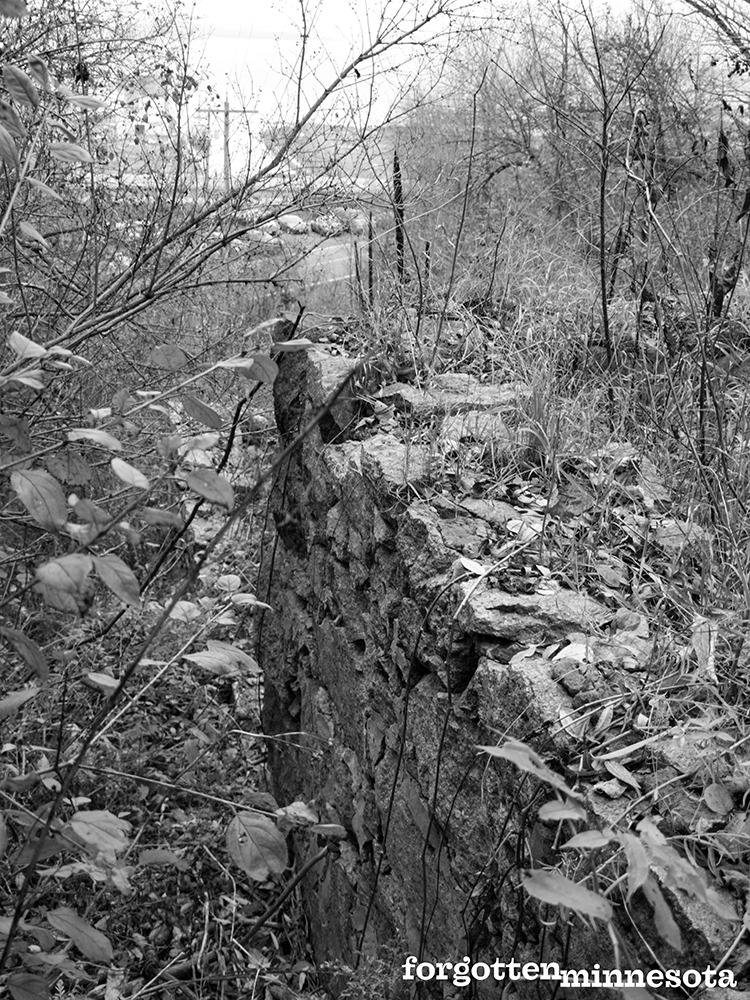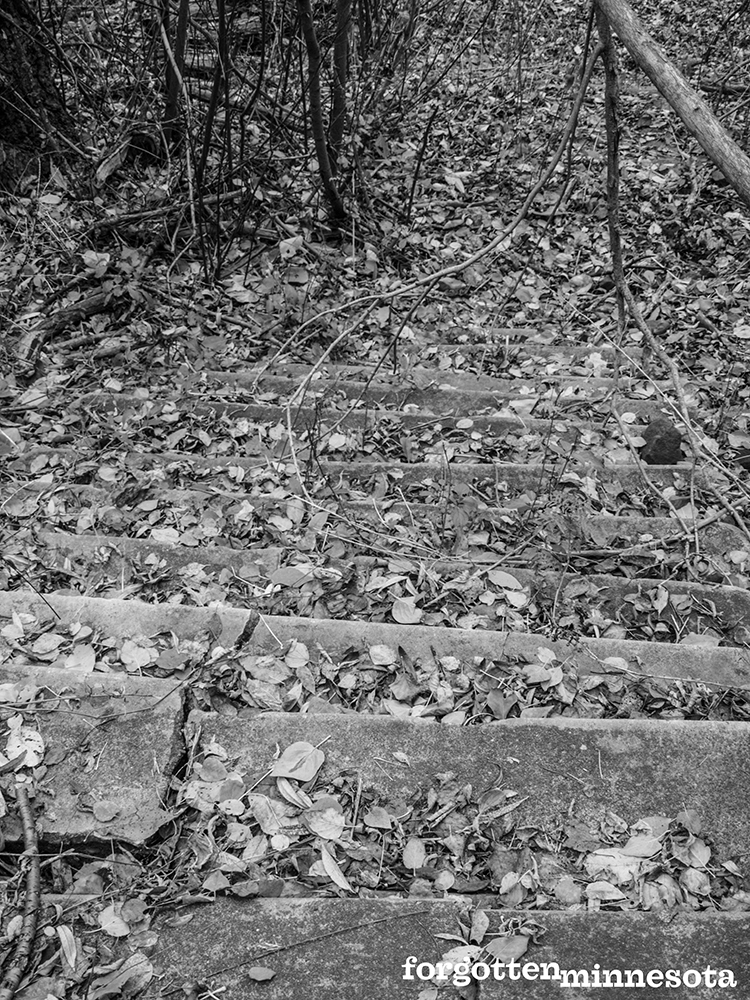Stone Ruins of Park Terrace in Duluth
Park Terrace was an opulent building of Victorian townhouses located on a steep hill just off of Mesaba Avenue in Duluth. Built in 1890 by the Myers Brothers Investment Company at the cost of $50,000. Park Terrace was one of the first multi-family buildings in West Duluth. Two of the Meyers brothers, Henry and Benjamin, lived at Park Terrace with their families. Henry was the President of the company, which was an established real estate investment firm in Duluth by the time Park Terrace was built. The brothers were especially active in expanding West Duluth and saw sophisticated rental townhouses as the way of the future. Benjamin was also the President of the Bay View Land Company and established the Bayview Heights area of West Duluth.


A third brother, Jacob, lived on Seventh Avenue West and First Street. He founded the Duluth Incline Railway Company with his brothers and two other partners in 1888. The company was an integral part of bringing the Incline Railway to West Duluth. Jacob left Duluth for Galveston, Texas in 1891.
The exterior of Park Terrace featured a grand corner tower complete with a large weathervane that sat atop an ornate metal dome. Six upward terraces climbed the steep hill on the northeastern side of the building, and four terraces ascended the northwestern side. To reach their home from the street, residents climbed concrete exterior stairs to a concrete walkway that led to a private porch at each home.
The eight townhomes in Park Terrace were either two or three levels and varied between six and nine rooms. A six-room apartment rented for $10 per month and a nine-room home went for $40 per month in the 1890s. Each home was heated with a modern hot water system and offered residents one of the best views of the harbor in the city.
























By the mid-1890s Benjamin had moved into a rented house on London Road and later moved to St. Paul. Henry stayed at the Park Terrace longer but eventually moved his family into a rented home east of downtown. In 1909, Henry purchased a large corner lot at 2505 East First Street and worked with the firm Bray and Nystrum to design a new home for his family. They moved into their 3,100 square-foot home on Thanksgiving Day, 1910.
After Henry’s death in 1931, Park Terrace began to deteriorate and the building was eventually abandoned. Park Terrace was sitting vacant and dilapidated, so the decision was made to demolish the building in 1936. The cornerstone of the building, which can be seen just below the corner porches in the historic photo, was saved and has been placed at street level where it still rests. Today, trees and bushes cover the terraced foundations and crumbling staircases where the grand building once stood.
